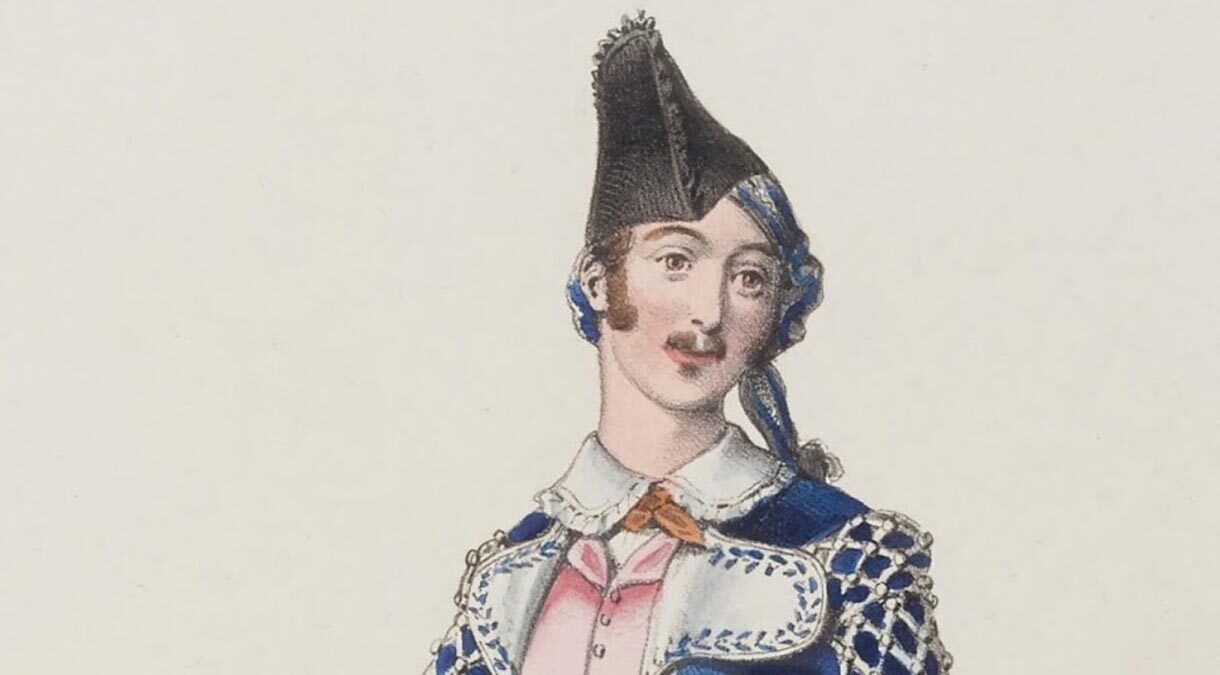“Figaro.” Words by Sidney D. Mitchell, music by Otto Motzan (1928). Recorded in Chelsea, London on May 20, 1930 by the Rhythm Maniacs under the musical direction of Arthur Lally with vocals by Maurice Elwin. Decca F-1799.
Personnel: Arthur Lally-cl-as-bar dir. probably Norman Payne-Bill Shakespeare-t / Jock Fleming or Ted Heath-tb / Danny Polo-cl-as / Joe Jeanette-cl-ts / Claude Ivy-p / Joe Brannelly-bj / Bill Harty-d / Rudy Starita-vib-x / Maurice Elwin-v / ?Jack Jackson-sc
Transfer by Henry Parsons
Did the Rhythm Maniacs just reference the Figaro of Rossini’s Barber of Seville? They did, but only obliquely, as it turns out. The original lyrics of Mitchell and Motzan’s “Figaro” refer not to a Barber of Seville, but rather to a barber of Greenwich Village who likes to sing “Figaro, Figaro, Figaro” 1 (whereas the Bidgood’s Broadcasters version relocates its “Figaro” to Saffron Hill, a London street housing Italian immigrants). In the Rhythm Maniacs version of “Figaro,” then, Maurice Elwin is not singing about the opera character Figaro, but about someone who thinks that he can sing opera.
The vocal refrain that Elwin is given is so short, at thirty-three seconds, that he does not get to specify who his “Figaro” is or where he lives and works. The lyrical excerpt has been torn from its context in the Mitchell-Motzan “Figaro,” so the repetition of “Figaro, Figaro, Figaro” and the general spirit of boasting that Elwin projects might actually lead us to recall the opening scenes of Rossini’s opera rather than the barber in New York or London. Elwin sings some generalities about “Figaro’s” attractiveness to the opposite sex and states that he is “the king of all.”
But Elwin ends up seeming like the straight man in a joke, as he is upstaged by another vocalist engaging in purposely comical scat. Rust and Forbes do not mention Jack Jackson’s presence at this session, but it sounds like him. One of the reasons that the scat sounds so awkward is that there is an additional joke of some sort embedded in it. Tim Machin of the Facebook Golden Age of British Dance Bands group is right, I think, to make out something like “Napoleon…one arm…could have been Nelson” embedded in amongst all the nonsensical vocalizations, and Nick Dellow suggests that there could even be a reference to the 1920s song “Why Sell Kippers in Pairs?” which has the line “Lord Nelson only had one eye and one arm, / So why sell kippers in pairs?” 2
Other British dance bands who recorded “Figaro” in 1930 were the Savoy Orpheans (directed at the time by Ben Loban; v. Cavan O’Connor and chorus), Arthur Roseberry and His Dance Band (v. Leslie Holmes and chorus), the Debroy Somers Band (v. Tom Barratt), Jack Leon’s Dance Band (v. Jimmy Allen), Nat Star and His Dance Orchestra (as Selwyn’s Dance Orchestra; v. Tom Barratt), The Rhythmic Eight (directed by John Firman), the New Mayfair Dance Orchestra (dir. Ray Noble; v. Leonard Henry and Wally Vernon), Hal Swain and His Band (v. Fred Douglas), and (as mentioned above) Bidgood’s Broadcasters (as Ted Summer’s Dance Devils; v. Leslie Rome).



